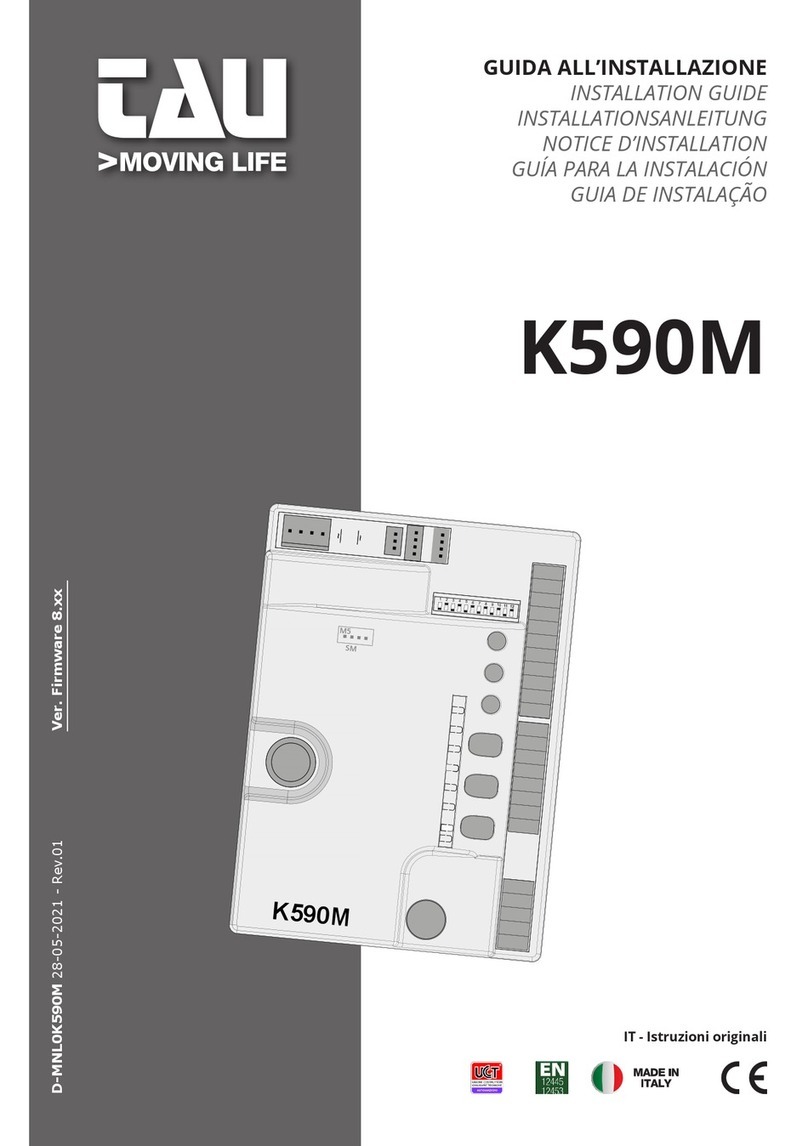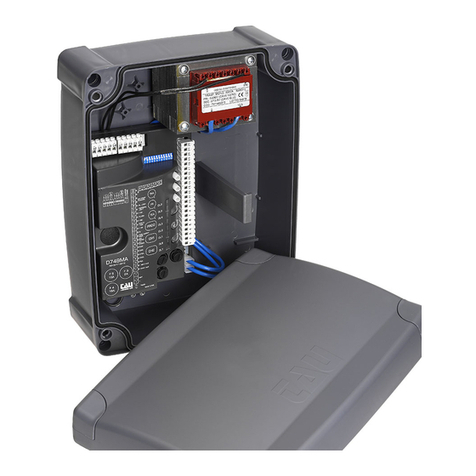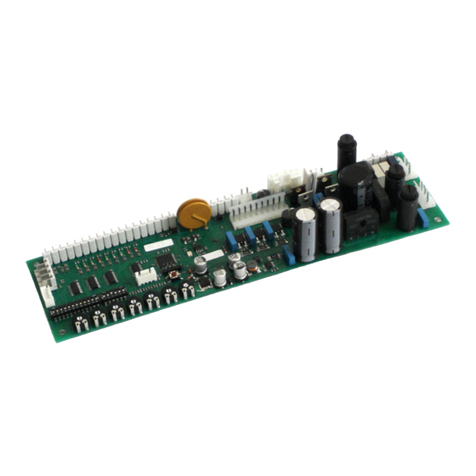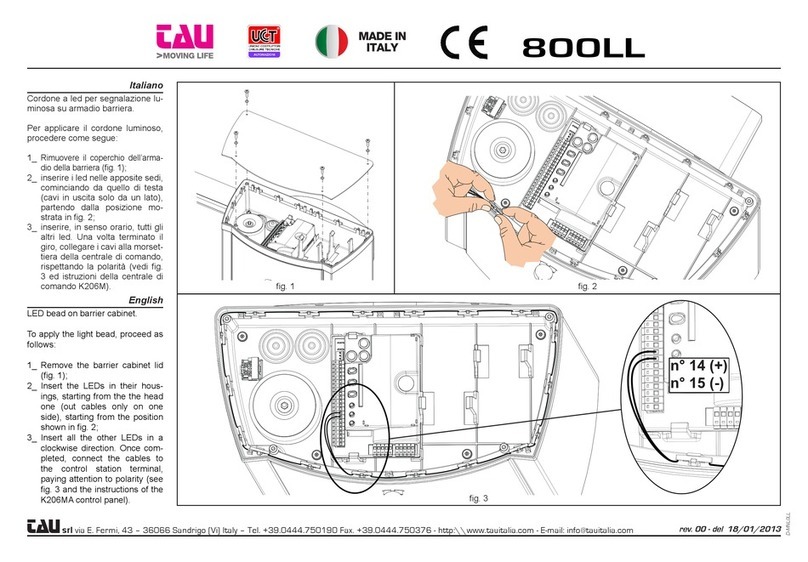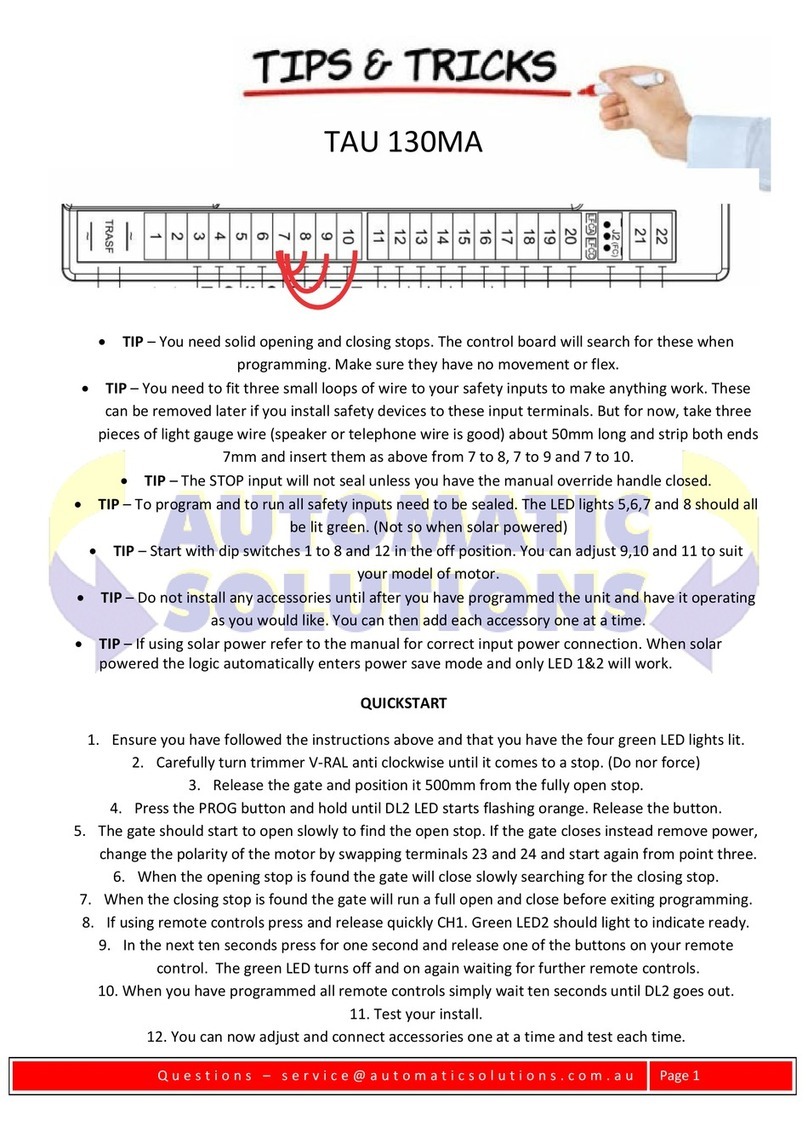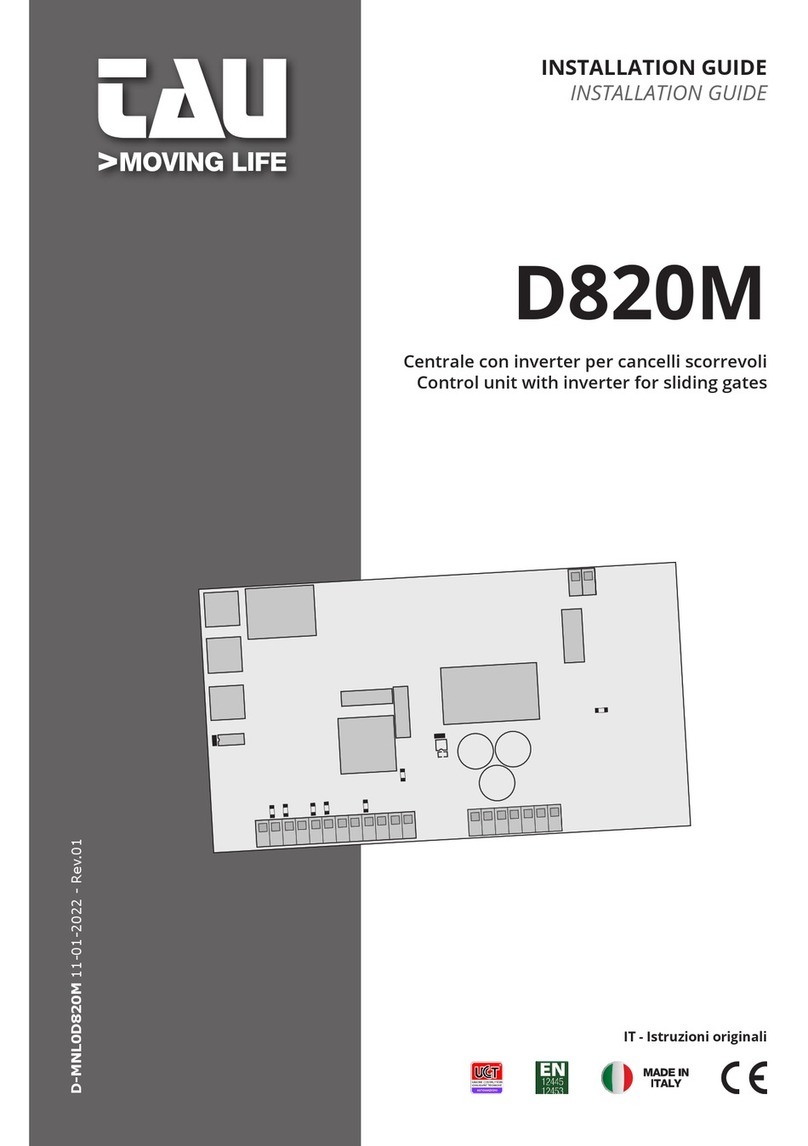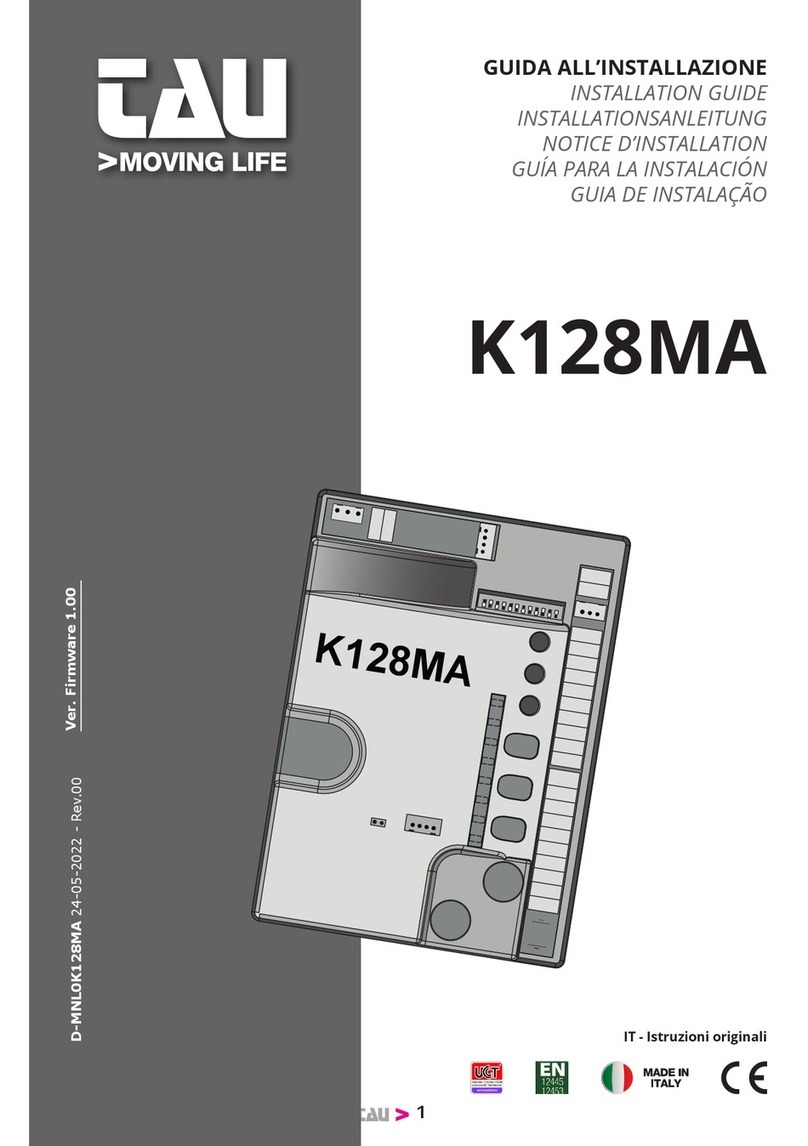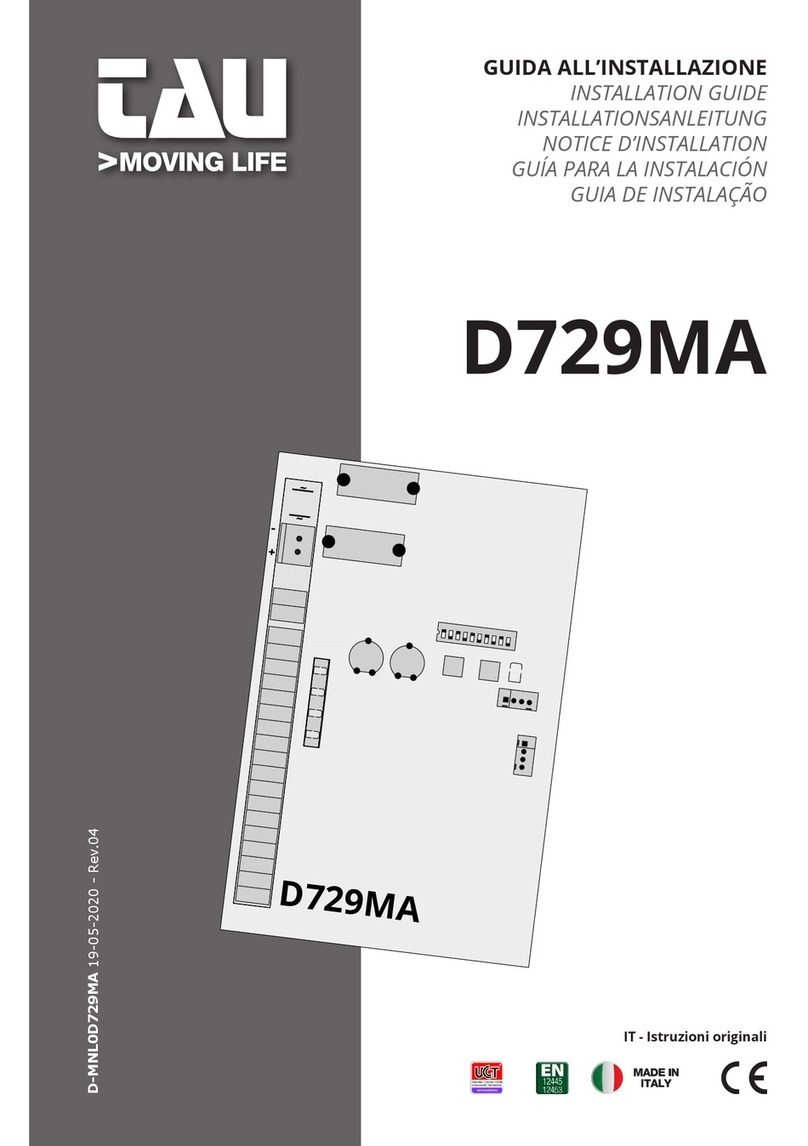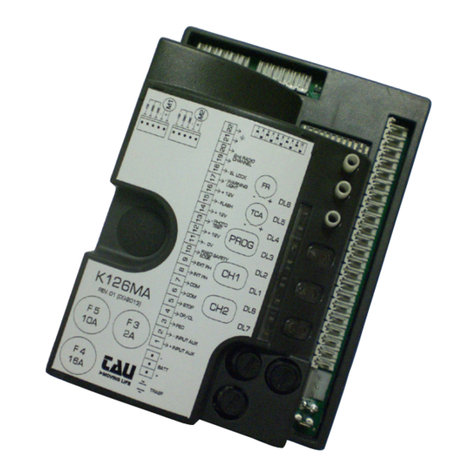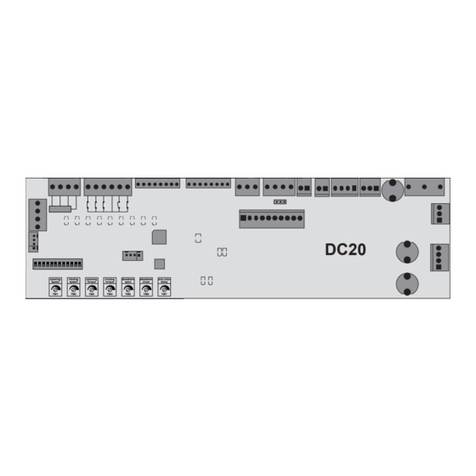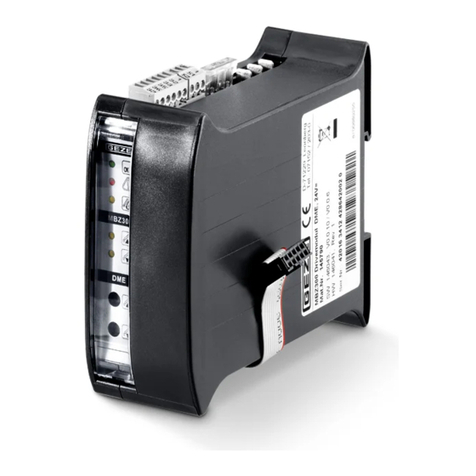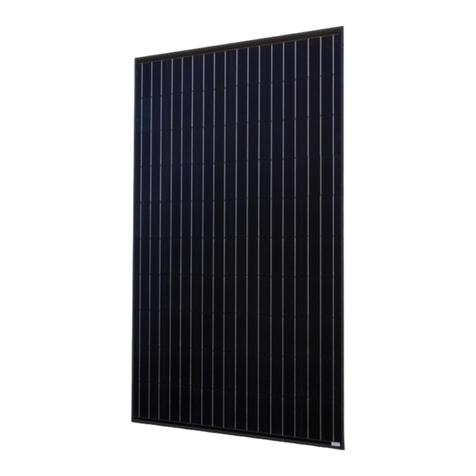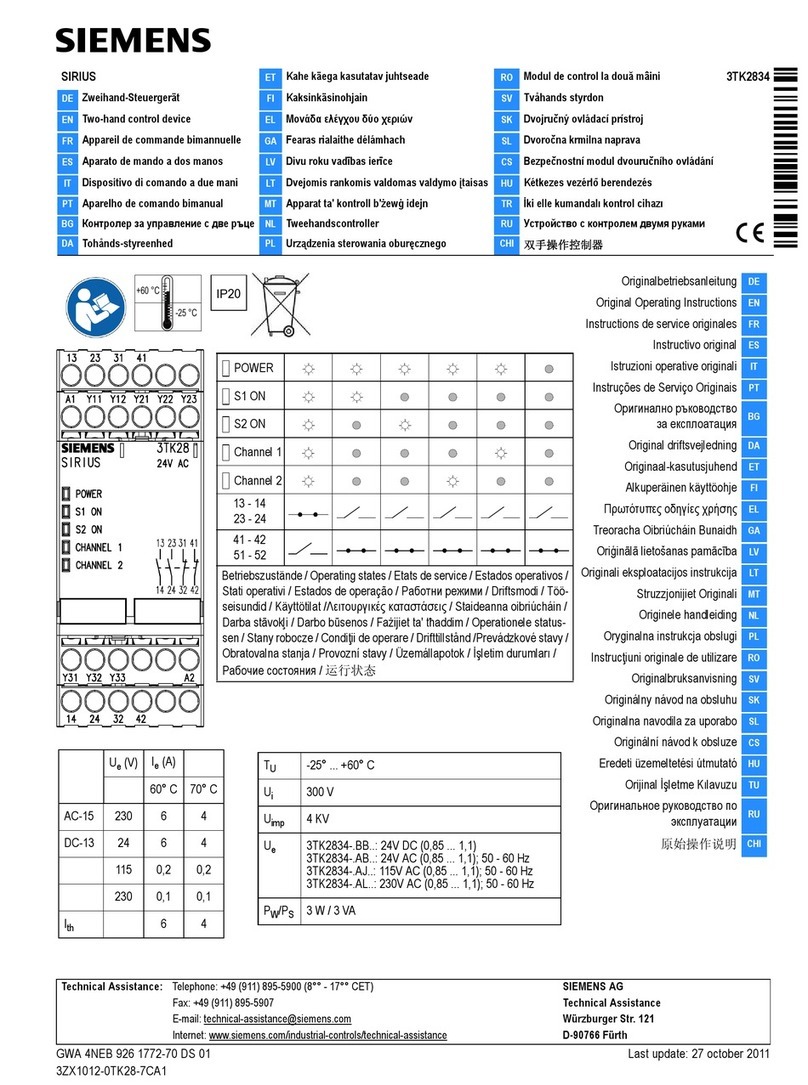tau D727M User manual

GUIDA ALL’INSTALLAZIONE
INSTALLATION GUIDE
INSTALLATIONSANLEITUNG
NOTICE D’INSTALLATION
GUÍA PARA LA INSTALACIÓN
GUIA DE INSTALAÇÃO
IT - Istruzioni originali
D727M
D727M
D-MNL0D727M 12-03-2020 - Rev.15

2
SCHEMA CABLAGGIO D727M / D727M WIRING DIAGRAM / SCHALTPLAN DER D727M
Common 24 Vac
21 20 19 18 17 16 15 14 13 12 11 10 9
22
23
24
2526
27
345678
12F1 5X20 F6,3 A
F2 5X20 F2 A
ON
12345678
D727M
T.L.
T.R.A.
TCA
+
-
24 V DC
24 V DC
24 V DC
24 V DC
Power supply
230 Vac
M1
~
M2
~
Flashing
light
230Vac
max 50 W
Open
Close
Common
Common
Open
Close
Flashing light
2°Ch. RX
Electric lock
12 Vac - max
15 W
External
photocells
RX TX
Ped
Stop
O/C button
Common buttons
Gate open
warning light
aperto max 3 W
Antenna
433.92 MHz
0140 160 180 200 230
24 12 0
TRANSFORMER
DL1
P1 P2
DIP-SWITCHES
Photocell RX
24 Vac
Gate open warning light
Photocell TX
E.L.
E.L.
24 Vac
12 Vac
0 Vac
Selecton
230 Vac
0 Vac
N.C.
+
-+
-
DL1
2829
T.L.
T.R.A.
TCA
+
-
+
-
+
-
ON
12345
678
DIP-SWITCH
ES
O/C = Open/Close
Ped = Pedestrian
Cap = Capacitor
TX = Transmitter
RX = Receiver
E.L. = Electric lock
M = Motor
N.C. = Normally Closed

3
SCHÉMA CÂBLAGE D727M / ESQUEMA DEL CABLEADO D727M
Common 24 Vac
21 20 19 18 17 16 15 14 13 12 11 10 9
22
23
24
2526
27
345678
12F1 5X20 F6,3 A
F2 5X20 F2 A
ON
12345678
D727M
T.L.
T.R.A.
TCA
+
-
24 V DC
24 V DC
24 V DC
24 V DC
Power supply
230 Vac
M1
~
M2
~
Flashing
light
230Vac
max 50 W
Open
Close
Common
Common
Open
Close
Flashing light
2°Ch. RX
Electric lock
12 Vac - max 15 W
External
photocells
RX TX
Ped
Stop
O/C button
Common buttons
Gate open
warning light
aperto max 3 W
Antenna
433.92 MHz
0140 160 180 200 230
24 12 0
TRANSFORMER
DL1
P1 P2
DIP-SWITCHES
Photocell RX
24 Vac
Gate open warning light
Photocell TX
E.L.
E.L.
24 Vac
12 Vac
0 Vac
Selecton
230 Vac
0 Vac
N.C.
+
-+
-
DL1
2829
T.L.
T.R.A.
TCA
+
-
+
-
+
-
ON
12345
678
DIP-SWITCHES
O/C = Open/Close
Ped = Pedestrian
Cap = Capacitor
TX = Transmitter
RX = Receiver
E.L. = Electric lock
M = Motor
N.C. = Normally Closed

4
INTRODUZIONE
Il presente manuale è destinato solamente al personale tecnico qualicato per l’installazione. Nessuna infor-
mazione contenuta nel presente fascicolo può essere considerata d’interesse per l’utilizzatore nale. Questo
manuale è allegato alla centralina D727M montata sul motoriduttore Easy, non deve pertanto essere utiliz-
zato per prodotti diversi!
Avvertenze importanti:
Togliere l’alimentazione di rete alla scheda prima di accedervi.
La centralina D727M è destinata al comando di due motoriduttori elettromeccanici in corrente alternata per
l’automazione di cancelli a battente.
Ogni altro uso è improprio e, quindi, vietato dalle normative vigenti.
È nostro dovere ricordare che l’automazione che state per eseguire, è classicata come “costruzione di una
macchina” e quindi ricade nel campo di applicazione della direttiva europea 2006/42/CE (Direttiva Macchine).
Questa, nei punti essenziali, prevede che:
- l’installazione deve essere eseguita solo da personale qualicato ed esperto;
- chi esegue l’installazione dovrà preventivamente eseguire “l’analisi dei rischi” della macchina;
- l’installazione dovrà essere fatta a “regola d’arte”, applicando cioè le norme;
- inne dovrà essere rilasciata al proprietario della macchina la”dichiarazione di conformità”.
Risulta chiaro quindi che l’installazione ed eventuali interventi di manutenzione devono essere eettuati solo
da personale professionalmente qualicato, in conformità a quanto previsto dalle leggi, norme o direttive
vigenti.
Nella progettazione delle proprie apparecchiture, TAU rispetta le normative applicabili al prodotto (vedere
la dichiarazione di conformità allegata); è fondamentale che anche l’installatore, nel realizzare gli impianti,
prosegua nel rispetto scrupoloso delle norme.
Personale non qualicato o non a conoscenza delle normative applicabili alla categoria dei “cancelli e porte
automatiche” deve assolutamente astenersi dall’eseguire installazioni ed impianti.
Chi non rispetta le normative è responsabile dei danni che l’impianto potrà causare!
Si consiglia di leggere attentamente tutte le istruzioni prima di procedere con l’installazione.
INSTALLAZIONE
Prima di procedere assicurarsi del buon funzionamento della parte meccanica. Vericare inol-
tre che il gruppo motoriduttore sia stato installato correttamente seguendo le relative istru-
zioni. Eseguiti questi controlli, assicurarsi che il motoriduttore non abbia un assorbimento du-
rante il movimento superiore a 3 A (per un corretto funzionamento del quadro di comando).
L’INSTALLAZIONE DELL’APPARECCHIATURA DEVE ESSERE EFFETTUATA “A REGOLA D’ARTE” DA PERSO-
NALE QUALIFICATO COME DISPOSTO DAL D.M. 37/08.
NB : si ricorda l’obbligo di mettere a massa l’impianto nonché di rispettare le normative sulla sicurezza
in vigore in ciascun paese.
LA NON OSSERVANZA DELLE SOPRAELENCATE ISTRUZIONI PUÒ PREGIUDICARE IL BUON FUNZIO-
NAMENTO DELL’APPARECCHIATURA E CREARE PERICOLO PER LE PERSONE, PERTANTO LA “CASA CO-
STRUTTRICE” DECLINA OGNI RESPONSABILITÀ PER EVENTUALI MAL FUNZIONAMENTI E DANNI DOVUTI
ALLA LORO INOSSERVANZA.
1. SCHEDA COMANDO PER MOTORIDUTTORE EASY
• LOGICA CON MICROPROCESSORE
• FUNZIONE “INGRESSO PEDONALE”
• CIRCUITO DI LAMPEGGIO INCORPORATO
• DIAGNOSTICA DEL DIFETTO FUNZIONE VISUALIZZATO DA LED
• RADIO RICEVITORE 433,92 MHz INTEGRATO A 2 CANALI (CH)
• FUNZIONE “MEMORIA DEI TEMPI”
ATTENZIONE:
- non utilizzare cavi unilari (a conduttore unico), es. quelli citofonici, al ne di evitare inter-
ITALIANO

5
ruzioni sulla linea e falsi contatti.
- non riutilizzare vecchi cavi preesistenti.
- In caso di lunghi tratti di cavi ( > 20 m) per i comandi N.A. / N.C. (es: APRE/CHIUDE, STOP, PE-
DONALE, ecc), al ne di evitare malfunzionamenti del cancello si renderà necessario disac-
coppiare i vari comandi mediante RELAYS oppure utilizzando il nostro dispositivo 750T-RELE.
2. CARATTERISTICHE TECNICHE
Alimentazione scheda 230V AC - 50 Hz
Potenza max. motore 280 W - 230V AC
Fusibile rapido protezione alimentazione ingresso 230 Vac (F1 - 5x20)
F 6,3A
Fusibile ritardato protezione ausiliari 24 V ac (F2 - 5x20) T 2A
Tensione circuiti alimentazione motore 230V AC
Tensione alimentazione circuiti dispositivi ausiliari 24V AC
Tensioni alimentazioni circuiti logici 5V DC
Temperatura di funzionamento -20 °C ÷ +55 °C
3. COLLEGAMENTI ALLA MORSETTIERA
Legenda: N.C. = Normalmente Chiuso N.A. = Normalmente Aperto
Morsetti Funzione Descrizione
1 - 2 ALIMENTAZIONE ingresso alimentazione 230 Vac. 1=NEUTRO, 2=FASE;
1 - 3 LAMPEGGIANTE uscita lampeggiante 230 Vac max 50 W.
Nota: il segnale fornito è già opportunamente modulato per l’uso diretto;
4 - 5 - 6 MOTORE 2
uscita alimentazione motore 2, 230 Vac, max 400 W.
4=CHIUDE, 5=APRE, 6=COMUNE.
Nota: collegare il condensatore fra i morsetti 4 e 5;
6 - 7 - 8 MOTORE 1
uscita alimentazione motore 1 (motore che apre l’anta del cancello con
l’elettroserratura), 230 Vac, max 280 W.
6=COMUNE, 7=CHIUDE, 8=APRE.
Nota: collegare il condensatore fra i morsetti 7 e 8;
9 - 10 2° CH RADIO
uscita 2° canale radio integrato - per comandare un’altra automazione o
accendere luci, etc...
(contatto pulito N.A. max 1 A);
Nota: per il collegamento di altri dispositivi al 2° canale radio, qua-
li accensione luci, comando pompe o carichi importanti, utilizzare
un relè ausiliario di potenza con portata adeguata ai dispositivi da
collegare, altrimenti si potrebbero avere malfunzionamenti dovuti
a disturbi indotti.
11 - 12 ELETTRO
SERRATURA uscita alimentazione elettroserratura 12 Vac max 15 W;
13 - 15 TX FOTOCELLULE uscita alimentazione della fotocellula trasmittente (per il FOTOTEST), 24
Vac max 5 W max. nr. 1 trasmettitore fotocellule;
14 - 15 SPIA CANCELLO
APERTO uscita alimentazione spia cancello aperto e in movimento 24 Vac, max 3 W;
15 - 16 FOTOCELLULE uscita alimentazione 24 Vac, max 15 W per fotocellule - max nr 2 coppie
(e/o eventuali relay, ricevitori, etc...);
17 - 18 APRE/CHIUDE
ingresso N.A. pulsante APRE/CHIUDE - comanda l’apertura e la chiusura
del cancello ed è regolato nel funzionamento dai dip-switches nr 2 e 4
(17 = COM - 18 = A/C);
ITALIANO

6
17 - 19 PEDONALE
ingresso contatto N.A. pulsante PEDONALE - Comanda l’apertura e la
chiusura totale del motore 1 ed è regolato nel funzionamento dai dip-
switches 2 e 4 (17 = COM - 19 = PED);
17 - 20 STOP
ingresso contatto N.C. pulsante STOP - Arresta il cancello dovunque si
trovi, inibendo temporaneamente la chiusura automatica, se program-
mata (17 = COM - 20 = STOP);
17 - 21 FOTOCELLULE
ingresso contatto N.C. fotocellule - interviene durante la chiusura o an-
che durante l’apertura, vedi dip-switch nr. 3
(17 = COM - 21 = FOT);
Nota: il trasmettittore della fotocellula deve sempre essere alimen-
tato dai morsetti nr 13 e nr 15, in quanto su di esso si eettua la ve-
rica del sistema di sicurezza (Fototest). Senza questo collegamen-
to, la centralina non funziona. Per eliminare la verica del sistema
di sicurezza, o quando non si usano le fotocellule, porre il dip-switch
nr 6 in OFF.
22 - 23
TRASFORMATORE
uscita alimentazione trasformatore
(22 = 0 Vac - 23 = 230 Vac);
24
SELEZIONE
TENSIONE
ALIMENTAZIONE
ingresso tensione di funzionamento selezionata;
REGOLAZIONE SPINTA MOTORE
Nota: più alta è la tensione selezionata, maggior spinta ha il
motoriduttore;
25 - 26 - 27 AUX ingresso bassa tensione per alimentazione circuiti ausiliari e logici (25 = 0
Vac - 26 = 12 Vac - 27 = 24 Vac);
28 - 29 ANTENNA ingresso antenna radioricevente integrata 433,92 MHz
(28 = MASSA - 29 = SEGNALE).
4. REGOLAZIONI LOGICHE
TRIMMER
TCA
regolazione Tempo di Chiusura Automatica: da 3 a 245 secondi ca. (vedi dip-switch nr.
1);
TRA regolazione ritardo secondo motore in chiusura da 1 a 16 sec. ca.;
TL regolazione tempo di lavoro da 4 a 64 sec. ca.
Il quadro di comando D727M è dotato della funzione “MEMORIA DEI TEMPI”.
Questa funzione implica la necessità di lasciare completare la prima manovra
senza interrompere la corsa del motore (tempo di lavoro regolato tramite il
trimmer T.L.). In caso contrario togliere la tensione di rete, attendere 5 sec. ca.,
rialimentare l’impianto e ripetere la procedura.
Dip switch
1CHIUSURA
AUTOMATICA
On ad apertura completata, la chiusura del cancello è automatica trascorso
un tempo impostato sul trimmer T.C.A.;
O la chiusura necessita di un comando manuale;
22 / 4 TEMPI
On ad automazione funzionante, una sequenza di comandi di apertura/chiusura
induce il cancello ad una APERTURA-CHIUSURA-APERTURA-CHIUSURA, etc.
O
nelle stesse condizioni, la stessa sequenza di comandi induce il cancello
ad una APERTURA-STOP-CHIUSURA-STOP-APERTURA-STOP, etc. (funzio-
ne passo-passo) (vedi anche dip switch 4);
3
INTERVENTO
FOTOCELLULE
IN APERTURA
On
durante la fase di apertura la fotocellula interviene arrestando il cancello
no a rimozione dell’ostacolo rilevato. In fase di chiusura provoca l’arre-
sto seguito dalla totale riapertura del cancello;
O durante la fase di apertura la fotocellula non interviene, mentre in fase di
chiusura si comporta come in modalità on;
ITALIANO

7
4NO
REVERSE
On il cancello si comporta come stabilito dal dip switch nr. 2
O il cancello ignora i comandi di chiusura durante l’apertura (funzione con-
dominiale);
5PRE-
LAMPEGGIO
On la funzione prelampeggio è inserita;
O la funzione prelampeggio è disinserita;
6FOTOTEST
On la funzione “verica delle fotocellule” è inserita;
O la funzione “verica delle fotocellule” è disinserita. N.B.: da utilizzare
quando non si usano le fotocellule;
7
SETTAGGIO
2° CH RADIO
On la funzione bistabile (o PASSO-PASSO) del relè di comando CH2 (morsetti
nr 9 e 10) è inserita;
O la funzione monostabile del relè di comando CH2 (morsetti nr 9 e 10) è inserita;
8
On
con il dip-switch 7 in OFF (funzione monostabile) il contatto N.A. rimane
chiuso per 180 sec. (tempo sso non variabile per il comando temporiz-
zato delle luci);
O
con il dip-switch 7 in OFF (funzione monostabile) il contatto N.A. rimane
chiuso per 2 sec. (tempo sso non variabile per il comando di una secon-
da automazione).
5. CARATTERISTICHE DELLA D727M
LED - DL1
Il led, oltre ad indicare la presenza dell’alimentazione, segnala eventuali errori con una serie di lam-
peggi predeniti:
sempre acceso: funzionamento regolare;
1 lampeggio: errore fototest dopo 3 tentativi falliti;
Disabilitare fototest (dip-switch 6 in OFF), vericare funzionamento fotocellule e loro collegamento;
2 lampeggi: le fotocellule sono rimaste impegnate;
Disimpegnare le fotocellule, vericare funzionamento e loro collegamento;
L’indicazione di più errori viene eseguita con una pausa di 2 sec. tra una segnalazione e l’altra.
SPIA CANCELLO APERTO (24 Vac - max. 3W)
La spia cancello aperto, durante la fase di apertura o chiusura dell’automazione, lampeggia in sincro-
nia con l’indicatore luminoso (lampeggiante). Rimane poi ssa al raggiungimento dell’apertura totale.
Una volta completata anche la fase di chiusura, questa si spegne.
La spia cancello aperto ha inoltre la funzione di segnalare:
• presenza di eventuali ostacoli lungo la corsa dell’automazione dopo 5 tentativi di chiusura falliti;
lampeggia in sincronia con il lampeggiante.
APERTURA E CHIUSURA COMANDATA DA OROLOGIO
É possibile comandare l’apertura e la chiusura del cancello mediante un orologio digitale che in uscita
disponga di un contatto relè.
Sarà suciente collegarlo ai morsetti 17 - 18 (pulsante APRE/CHIUDE) e programmarlo in modo che, all’o-
ra di apertura desiderata, il contatto relè dell’orologio si chiuda sino all’ora di chiusura voluta (momento
in cui il contatto relè dell’orologio si apre nuovamente, permettendo così la richiusura automatica).
Nota: la richiusura automatica deve essere inserita (Dip-switch nr. 1 in ON).
SELEZIONE DELLA TENSIONE DI ALIMENTAZIONE MOTORI
Selezionare la tensione di funzionamento dei motori (140 - 160 - 180 - 200 Vac) tramite il morsetto nr
24 nella scheda di comando e l’uscita per la tensione desiderata sul trasformatore.
Nota: eseguire le operazioni per la selezione della tensione desiderata a trasformatore
DISALIMENTATO.
6. RADIO RICEVITORE 433,92 MHz INTEGRATO
ITALIANO

8
Il radio ricevitore può apprendere no ad un max di 8 codici a dip-switches (TXD2, TXD4, BUG2, BUG4,
K-SLIM, K-SLIM-C, T-4, T-4C) o rolling code (BUG2R, BUG4R, K-SLIM-RP, T-4RP) da impostare liberamen-
te su due canali.
Il primo canale comanda direttamente la scheda di comando per l’apertura dell’automazione; il secon-
do canale comanda un relè per un contatto pulito N.A. in uscita (morsetti nr 9 e 10, max 24 Vac, 1 A).
La modalità di apprendimento (dip-switches o rolling code) viene determinata dal primo radiocoman-
do e rimarrà la stessa no alla cancellazione totale di tutti i codici.
APPRENDIMENTO RADIOCOMANDI
P1 = 2° canale P2 = APRE/CHIUDE
1_ premere brevemente il tasto P2 se si desidera associare un radiocomando alla funzione APRE/CHIUDE;
2_ il led DL1 si spegne per indicare la modalità di apprendimento dei codici (se non viene immesso nessun
codice entro 10 secondi, la scheda esce dalla modalità di programmazione);
3_ premere il tasto del radiocomando che si desidera utilizzare;
4_ il led DL1 si riaccende per segnalare l’avvenuta memorizzazione (se ciò non accade, attendere 10 se-
condi e riprendere dal punto 1);
5_ se si desidera memorizzare altri radiocomandi ripetere la procedura dal punto 1 no ad un massimo
di 8 trasmettitori;
6_ se si desidera eettuare la memorizzazione sul 2° canale, ripetere la procedura dal punto 1 utilizzando
il tasto P1 anzichè il tasto P2;
7_ se si desidera uscire dalla modalità di apprendimento senza memorizzare un codice, premere brve-
mente il tasto P1 o il tasto P2.
Nota: nelcaso di superamentodel nrmassimo di radiocomandi(nr 8), il ledDL1 inizierà alampeggiare
velocemente per circa 3 secondi senza però eseguire la memorizzazione.
CANCELLAZIONE RADIOCOMANDI
1_ tenere premuto per 3 secondi ca. il tasto P2 al ne di cancellare tutti i radiocomandi ad esso associati;
2_ il led DL1 inizia a lampeggiare lentamente per indicare che la modalità di cancellazione è attivata;
3_ tenere pemuto nuovamente il tasto P2 per 3 secondi;
4_ il led DL1 si spegne per 3 secondi ca. per poi riaccendersi sso ad indicare l’avvenuta cancellazione;
5_ riprendere la procedura dal punto 1 utilizzando il tasto P1 per cancellare tutti i radiocomandi ad esso
associati;
6_ se si desidera uscire dalla modalità di cancellazione senza memorizzare un codice, premere brve-
mente il tasto P1 o il tasto P2.
ATTENZIONE: Se si desidera memorizzare un nuovo tipo di telecomando (es: da dip-switches a
rolling code o viceversa) è necessario cancellare entrambi i canali.
7. MALFUNZIONAMENTI: POSSIBILI CAUSE E RIMEDI
1- L’automazione non parte
a- Vericare con lo strumento (Multimetro) la presenza dell’alimentazione 230Vac;
b- Vericare che i contatti N.C. della scheda siano eettivamente normalmente chiusi;
c- Impostare il dip 6 (fototest) su OFF;
d- Controllare con lo strumento (Multimetro) che i fusibili siano integri.
2- Il radiocomando ha poca portata
a- Controllare che il collegamento della massa e del segnale dell’antenna non sia invertito;
b- Non eseguire giunzioni per allungare il cavo dell’antenna;
c- Non installare l’antenna in posizioni basse o in posizioni nascoste dalla muratura o dal pilastro;
d- Controllare lo stato delle pile del radiocomando.
3- Il cancello si apre al contrario
a- Invertire tra loro i collegamenti dei motori sulla morsettiera (morsetti 7 e 8 per il motore1;
morsetti 4 e 5 per il motore2);
8. GARANZIA: CONDIZIONI GENERALI
ITALIANO

9
La garanzia della TAU ha durata di 24 mesi dalla data di acquisto dei prodotti (fa fede il documento scale di
vendita, scontrino o fattura).
La garanzia comprende la riparazione con sostituzione gratuita (franco sede TAU: spese di imballo e di tra-
sporto sono a carico del cliente) delle parti che presentano difetti di lavorazione o vizi di materiale riconosciuti
dalla TAU.
In caso di intervento a domicilio, anche nel periodo coperto da garanzia, l’utente è tenuto a corrispondere il
“Diritto sso di chiamata” per spese di trasferimento a domicilio, più manodopera.
La garanzia decade nei seguenti casi:
• Qualora il guasto sia determinato da un impianto non eseguito secondo le istruzioni fornite dall’a-
zienda all’interno di ogni confezione.
• Qualora non siano stati impiegati tutti componenti originali TAU per l’installazione dell’automatismo.
• Qualora i danni siano causati da calamità naturali, manomissioni, sovraccarico di tensione, alimenta-
zione non corretta, riparazioni improprie, errata installazione, o altre cause non imputabili alla TAU.
• Qualora non siano state eettuate le manutenzioni periodiche da parte di un tecnico specializzato
secondo le istruzioni fornite dall’azienda all’interno di ogni confezione.
• Usura dei componenti.
La riparazione o la sostituzione dei pezzi durante il periodo di garanzia non comporta un prolungamento del
termine di scadenza della garanzia stessa.
In caso di utilizzo industriale o professionale oppure in caso di impiego simile, tale garanzia ha validità 12 mesi.
DICHIARAZIONE DI INCORPORAZIONE DEL COSTRUTTORE
(ai sensi della Direttiva Europea 2006/42/CE AlI. II.B)
Fabbricante: TAU S.r.l.
Indirizzo: Via E. Fermi, 43 - 36066 Sandrigo (Vi) - ITALIA
Dichiara sotto la propria responsabilità che il prodotto: Centrale di comando
realizzato per il movimento automatico di: Cancelli a Battente
per uso in ambiente: Residenziale / Condominiale completo di: Radioricevente
Modello: D727M Tipo:D727M
Numero di serie: vedi etichetta argentata
Denominazione commerciale: Quadro di comando per motoriduttore EASY
È realizzato per essere incorporato su una chiusura (cancello a battente) o per essere assemblato con altri dispositivi
al ne di movimentare una tale chiusura per costituire una macchine ai sensi della Direttiva Macchine 2006/42/CE.
Dichiara inoltre che questo prodotto è conforme ai requisiti essenziali di sicurezza delle seguenti ulteriori direttive
CEE: - 2006/95/CE Direttiva Bassa Tensione - 2004/108/CE Direttiva Compatibilità Elettromagnetica
ed, ove richiesto, alla Direttiva: -1999/5/CE Apparecchiature Radio e apparecchiature terminali di telecomunicazione
Dichiara inoltre che non è consentito mettere in servizio il macchinario no a che la macchina in cui sarà
incorporato o di cui diverrà componente sia stata identicata e ne sia stata dichiarata la conformità alle condizioni
della Direttiva 2006/42/CE.
Si impegna a trasmettere, su richiesta adeguatamente motivata delle autorità nazionali, informazioni pertinenti sulle
quasi-macchine.
Sandrigo, 21/11/2014 Il Rappresentante Legale
_________________________________________
Loris Virgilio Danieli
Nome e indirizzo della persona autorizzata a costituire la documentazione tecnica pertinente:
Loris Virgilio Danieli - via E. Fermi, 43 - 36066 Sandrigo (Vi) Italia
ITALIANO

10
WARNINGS
This manual is designed to assist qualied installation personnel only. It contains no information that
may be of interest to nal users. This manual is enclosed with the D727M control unit mounted on the
Easy gearmotor and may therefore not be used for dierent products!
Important warnings:
Disconnect the mains power supply to the board before accessing it.
The D727M control unit has been designed to control two alternating current electromechanical gear-
motors for automatic swing gates.
Any other use is considered improper and is consequently forbidden by current laws.
Please note that the automation system you are going to install is classi ed as “machine construction”
and therefore is included in the application of European directive 2006/42/EC (Machinery Directive).
This directive includes the following prescriptions:
- Only trained and qualied personnel should install the equipment;
- the installer must rst make a “risk analysis” of the machine;
- the equipment must be installed in a correct and workmanlike manner in compliance with all the
standards concerned;
- after installation, the machine owner must be given the “declaration of conformity”.
This product may only be installed and serviced by qualied personnel in compliance with current,
laws, regulations and directives.
When designing its products, TAU observes all applicable standards (please see the attached declara-
tion of conformity) but it is of paramount importance that installers strictly observe the same stand-
ards when installing the system.
Unqualied personnel or those who are unaware of the standards applicable to the “automatic gates
and doors” category may not install systems under any circumstances.
Whoever ignores such standards shall be held responsible for any damage caused by the sys-
tem!
Do not install the unit before you have read all the instructions.
INSTALLATION
Before proceeding, make sure the mechanical components work correctly. Also check that the
gear motor assembly has been installed according to the instructions.
THE EQUIPMENT MUST BE INSTALLED “EXPERTLY” BY QUALIFIED PERSONNEL AS REQUIRED BY LAW.
NOTE : it is compulsory to earth the system and to observe the safety regulations that are in force in
each country.
IF THESE ABOVE INSTRUCTIONS ARE NOT FOLLOWED IT COULD PREJUDICE THE PROPER WORKING OR-
DER OF THE EQUIPMENT AND CREATE HAZARDOUS SITUATIONS FOR PEOPLE. FOR THIS REASON THE
“MANUFACTURER” DECLINES ALL RESPONSIBILITY FOR ANY MALFUNCTIONING AND DAMAGES THUS
RESULTING.
1. CONTROL BOARD FOR THE “EASY” GEARMOTOR
• MICROPROCESSOR-CONTROLLED LOGIC
• “PEDESTRIAN ENTRY” FUNCTION
• BUILT-IN FLASHING LIGHT CIRCUIT
• FAULT DIAGNOSTICS LED
• 433.92 MHz 2 CHANNEL BUILT-IN RADIO RECEIVER (CH)
•“MEMORY OF THE WORKING TIMES” FUNCTION
ATTENTION:
- do not use single cables (with one single wire), ex. telephone cables, in order to avoid
breakdowns of the line and false contacts.
- do not re-use old pre-existing cables.
- In case of long sections of cables (> 20 m) for N.O./N.C. controls (e.g. OPEN / CLO-
ENGLISH

11
SE, STOP, PEDESTRIAN, etc.), in order to avoid gate malfunctions, it will be neces-
sary to uncouple the various controls using RELAYS or using our 750T-RELE device.
2. TECHNICAL FEATURES
Power input to board 230V AC - 50 Hz
Maximum power of motor 280 W - 230V AC
230 Vac line rapid fuse (F1 - 5x20) F 6,3A
24 Vac auxiliary delayed fuse (F2 - 5x20) T 2A
Input voltage of motor circuits 230V AC
Input voltage of auxiliary circuits 24V AC
Input voltage of logic circuits 5V DC
Working temperature -20 °C ÷ +55 °C
3. TERMINAL BOARD CONNECTIONS
Key: N.C. = Normally Closed N.O. = Normally Open
Terminals Function Description
1 - 2 POWER SUPPLY power input 230 Vac. 1=NEUTRAL, 2=PHASE;
1 - 3 FLASHING LIGHT ashing light output 230 Vac 50 W max.
Note : the signal is already modulated for direct use;
4 - 5 - 6 MOTOR 2 motor 2 power output, 230 Vac, max. 400 W.
4=CLOSE, 5=OPEN, 6=COMMON.
Note: connect the capacitor between terminals 4 and 5;
6 - 7 - 8 MOTOR 1 motor 1 power output (opens the leaf tted with the electric lock), 230
Vac, max. 280 W. 6=COMMON, 7=CLOSE, 8=OPEN.
Note: connect the capacitor between terminals 7 and 8;
9 - 10 2nd CH RADIO
2nd built-in radio channel output – for commanding another automatic
device or turning on lights, etc. (N.O. no-voltage contact max. 1 A);
Warning: to connect other devices to the 2nd Radio Channel (area
lighting, pumps, etc.), use an additional auxiliary relay.
11 - 12 ELECTRIC LOCK electric lock power output 12 Vac max. 15 W;
13 - 15 PHOTOCELL TX transmitting photocell power output (for PHOTO TEST), 24 Vac max. 5
W - max. no. 1 photocell transmitter;
14 - 15 GATE OPEN
WARNING LIGHT gate open and moving LED power output 24 Vac, max. 3 W;
15 - 16 PHOTOCELL power output, 24 Vac max. 15 W for photocells – max. 2 pairs (and/or
relays, receivers, etc.);
17 - 18 OPEN/CLOSE N.O. OPEN/CLOSE button contact input – commands opening and closing
of the gate - governed by dip-switches 2 and 4 (17 = COM -18 = O/C);
17 - 19 PEDESTRIAN N.O. PEDESTRIAN button contact input – commands total opening and
closing of motor 1 – governed by dip-switches 2 and 4 (17 = COM - 19 = PED);
17 - 20 STOP N.C. STOP button contact input – if programmed, it stops the gate in
any position and temporarily disables the automatic closing cycle (17 =
COM - 20 = STOP);
17 - 21 PHOTOCELL
N.C. photocell contact input – cuts in during closing or during opening
and closing, see dip-switch 3 (17 = COM - 21 = PHOT);
Note: the photocell transmitter must always be powered by
terminals 13 and 15 as the safety system is tested (Photo test)
through them. The control unit will not work without this
connection. To disable the safety system test, or when photocells
are not used, turn dip-switch 6 OFF.
22 - 23 TRANSFORMER transformer power output (22 = 0 Vac - 23 = 230 Vac);
ENGLISH

12
24 POWER SUPPLY
SELECTION
selected working voltage input;
ADJUSTMENT OF MOTOR THRUST
The higher the selected voltage, the greater the thrust of the
gearmotor;
25 - 26 - 27 AUX low voltage input for powering auxiliary and logic circuits
(25 = 0 Vac - 26 = 12 Vac - 27 = 24 Vac);
28 - 29 AERIAL 433,92 MHz built-in radio-receiver aerial input
(28 = EARTH - 29 = SIGNAL).
4. LOGIC ADJUSTMENTS
TRIMMERS
TCA Automatic Closing Time adjustment: from approx. 5 to 245 seconds (see dip switch 1);
TRA second motor delay adjustment during closing cycle: from approx. 1 to 16 sec.;
TL Work Time adjustment: from approx. 4 to 64 seconds.
The D727M control unit is equipped with the “MEMORY OF THE WORKING
TIMES” function. This function means that the rst manoeuvre must be left to
completely nish without interrupting the travel of the motor (operation time
regulated by the T.L. Trimmer). Otherwise, turn o the mains power supply,
wait about 5 seconds, turn on the power supply and repeat the procedure.
Dip-switches
1AUTOMATIC
CLOSING
On after opening, the gate automatically closes when the delay set on the
T.C.A. trimmer expires;
O a manual command is required to close the gate;
22 / 4 STROKE
On with automatic closing enabled, a sequence of open/close commands
causes the gate to OPEN-CLOSE-OPEN-CLOSE etc.;
O in the same conditions, the same command sequence causes the gate to
OPEN-STOP-CLOSE-STOP-OPEN-STOP, etc. (step-by-step) (see also dip switch 4);
3OPENING
PHOTOCELLS
OPERATION
On during opening, the photocell cuts in to stop the gate until the obstacle
is removed. During closing, it stops the gate and then totally reopens it.
O during opening, the photocell does not trigger while during closing, it
behaves as if the dip switch were on;
4NO
REVERSE
On the gate works as set by dip switch 2
O the gate ignores the close command during the opening cycle (apartment
block function);
5PRE-
FLASHING
On pre-ashing function enabled;
O pre-ashing function disabled;
6FOTOTEST On “photocell test” function enabled;
O “photocell test” function disabled. N.B.: used when photocells are not used;
7
SETUP
2nd RADIO CH
On bistable (or STEP-BY-STEP) function of the CH2 control relay (terminals 9
and 10) enabled;
O monostable function of the CH2 control relay (terminals 9 and 10)
enabled;
8
On with dip-switch 7 OFF (monostable function), the N.O. contact remains
closed for 180 secs. (xed invariable delay for the timed control of the lights);
O
with dip-switch 7 OFF (monostable function), the N.O. contact remains
closed for 2 secs. (xed invariable delay for commanding a second
automatic system).
5. FEATURES OF THE D727M
LED - DL1
As well as indicating power-on, the LED also indicates faults by means of a series of predened
ENGLISH

13
sequences of ashes:
steady: ok;
1 ash: photo test error after three unsuccessful attempts;
Disable photo test (dip-switch 6 OFF), check photocells and relative connections;
2 ashes: photocells have been engaged;
Disengage the photocells, verify their operation and relative connections;
More than one error is indicated by means of a 2 second pause between one signal and the next.
GATE OPEN INDICATOR (24 Vac – max. 3W)
During the opening and closing cycles, the gate open indicator ashes in time with the LED (ashing).
It then remains steady when the gate is totally open. After the closing phase has been completed, it
turns o.
The gate open indicator also signals:
• the presence of obstacles near the gate after 5 unsuccessful attempts to complete the closing
cycle; ashes in time with the ashing light.
TIMED OPENING AND CLOSING
The gate can be opened and closed by means of a digital clock with a relay output contact.
Simply connect it to terminals 17 - 18 (OPEN/CLOSE button) and programme it so that, at the required
opening time, the relay contact of the clock closes until the required closing time (when the relay
contact of the clock opens once again, thereby allowing automatic closing).
Note: automatic closing must be enabled (Dip-switch 1 ON).
SELECTING MOTOR INPUT VOLTAGE
Select the operating voltage of the motors (140 - 160 - 180 - 200 Vac) using terminal 24 on the control
board and the output for the required voltage on the transformer.
Note: DISCONNECT the transformer before selecting a voltage.
6. 433.92 MHz BUILT-IN RADIO RECEIVER
The radio receiver can learn up to a maximum of 8 dip-switches (TXD2, TXD4, BUG2, BUG4, K-SLIM,
K-SLIM-C, T-4, T-4C) or rolling codes (BUG2R, BUG4R, K-SLIM-RP, T-4RP) which can be set on the two
channels as required.
The rst channel directly commands the control board for opening the automatic device; the second
channel commands a relay for a N.O. no-voltage output contact (terminals 9 and 10, max. 24 Vac, 1 A).
The learning mode (dip-switch or rolling code) is determined by the rst radio control device and
remains unchanged until all the codes have been cancelled.
LEARNING SYSTEM FOR RADIO CONTROL DEVICES
P1 = 2nd channel P2 = OPEN/CLOSE
1_ press button P2 briey to associate a radio control device with the OPEN/CLOSE function;
2_ LED DL1 turns o to indicate that the code learning mode has been activated (if no code is entered within
10 seconds, the board exits the programming mode);
3_ press the button of the relative radio control device;
4_ LED DL1 turns on again to indicate that the code has been memorised (if this does not happen, wait 10
seconds and start again from point 1);
5_ to memorise codes to other radio control devices, repeat the procedure from point 1 up to a maximum
of 8 transmitters;
6_ to memorise codes on the 2nd channel, repeat the procedure from point 1 using button P1 instead of P2;
7_ to exit the learning mode without memorising a code, press button P1 or P2 briey.
Note: if the maximum number of radio control devices (8) is exceeded, LED DL1 ashes rapidly for
about 3 seconds without memorising the code.
CANCELLING CODES FROM RADIO CONTROL DEVICES
1_ keep button P2 pressed for 3 seconds in order to cancel all the associated radio control devices;
2_ LED DL1 ashes slowly to indicate that the cancellation mode has been activated;
3_ press button P2 again for 3 seconds;
4_ LED DL1 turns o for approx. 3 seconds and then remains steady to indicate that the code has been
cancelled;
5_ repeat the procedure from point 1 using button P1 to cancel all the associated radio control devices;
6_ to exit the learning mode without memorising a code, press button P1 or P2 briey.
ATTENTION: TO memorise a code on a new type of remote control unit (e.g.: from dip-switch to
ENGLISH

14
rolling code or vice-versa) both channels must be cancelled.
7. MALFUNCTIONS: POSSIBLE CAUSES AND SOLUTION
1- The automation does not start
a- Check there is 230Vac power supply with the multimeter;
b- Check that the NC contacts of the card are actually normally closed;
c- Set dip 6 (phototest) to OFF;
d- Check that the fuses are intact with the multimeter.
2- The radio control has very little range
a- Check that the ground and the aerial signal connections have not been inverted;
b- Do not make joints to increase the length of the aerial wire;
c- Do not install the aerial in a low position or behind walls or pillars;
d- Check the state of the radio control batteries.
3- The gate opens the wrong way
a- Invert the motor connections on the terminal block (terminals 7 and 8 for motor 1; terminals 4
and 5 for motor 2);
8. GUARANTEE: GENERAL CONDITIONS
TAU guarantees this product for a period of 24 months from the date of purchase (as proved by the
sales document, receipt or invoice).
This guarantee covers the repair or replacement at TAU’s expense (ex-works TAU: packing and trans-
port at the customer’s expense) of parts that TAU recognises as being faulty as regards workmanship
or materials.
For visits to the customer’s facilities, also during the guarantee period, a “Call-out fee” will be charged
for travelling expenses and labour costs.
The guarantee does not cover the following cases:
• If the fault was caused by an installation that was not performed according to the instructions
provided by the company inside the product pack.
• If original TAU spare parts were not used to install the product.
• If the damage was caused by an Act of God, tampering, overvoltage, incorrect power supply,
improper repairs, incorrect installation, or other reasons that do not depend on TAU.
• If a specialised maintenance man does not carry out routine maintenance operations accord-
ing to the instructions provided by the company inside the product pack.
• Wear of components.
The repair or replacement of pieces under guarantee does not extend the guarantee period.
In case of industrial, professional or similar use, this warranty is valid for 12 months.
ENGLISH

15
MANUFACTURER’S DECLARATION OF INCORPORATION
(in accordance with European Directive 2006/42/EC App. II.B)
Manufacturer: TAU S.r.l.
Address: Via E. Fermi, 43
36066 Sandrigo (Vi)
ITALY
Declares under its sole responsibility, that the product: Electronic control unit
designed for automatic movement of: Swing Gates
for use in a: Residential / Communities
complete with: Radioreceiver
Model: D727M
Type: D727M
Serial number: see silver label
Commercial name: Control panel for EASY gearmotor
Has been produced for incorporation on an access point (swing gate) of for assembly with other devices used to
move such an access point, to constitute a machine in accordance with the Machinery Directive 2006/42/EC.
Also declares that this product complies with the essential safety requirements of the following EEC directives:
- 2006/95/EC Low Voltage Directive
- 2004/108/EC Electromagnetic Compatibility Directive
and, where required, with the Directive:
- 1999/5/CE Radio equipment and telecommunications terminal equipment
Also declares that it is not permitted to start up the machine until the machine in which it is incorporated or of
which it will be a component has been identied with the relative declaration of conformity with the provisions of
Directive 2006/42/EC.
The manufacturer undertakes to provide, on sufciently motivated request by national authorities, all information
pertinent to the quasi-machinery.
Sandrigo, 21/11/2014
Legal Representative
_________________________________________
Loris Virgilio Danieli
Name and address of person authorised to draw up all pertinent technical documentation:
Loris Virgilio Danieli - via E. Fermi, 43 - 36066 Sandrigo (Vi) Italy
ENGLISH

16
HINWEISE
Das vorliegende Handbuch ist nur für technisches, zur Installation qualiziertes Personal bestimmt.
Die im vorliegenden Heft enthaltenen Informationen sind für den Endbenutzer nicht interessant. Die-
se Anleitung liegt der in den Getriebemotor Easy installierten Steuerung D727M bei und darf daher
nicht für andere Produkte verwendet werden!
Wichtige Hinweise:
Vor Eingrien an der Steuerkarte die Netzstromversorgung abtrennen.
Die Steuerung D727M dient zum Steuern von zwei elektromechanischen Getriebemotoren in Wechsel-
strom für die Automatisierung von Drehtoren.
Jeder andere Einsatz ist unsachgemäß und daher laut gültiger Vorschriften verboten.
Unsere Picht ist, Sie daran zu erinnern, dass die Automatisierung, die Sie ausführen werden, als „Ma-
schinenkonstruktion“ klassiert ist und daher zum Anwendungsbereich der Europäischen Richtlinie
2006/42/CE (Maschinenrichtlinie) gehört.
Nach den wichtigsten Punkten dieser Vorschrift:
- darf die Installation ausschließlich von erfahrenem Fachpersonal ausgeführt werden;
- muss jener, der die Installation ausführt, vorher eine „Risikoanalyse“ der Maschine machen;
- muss die Installation “fachgerecht” bzw. unter Anwendung der Vorschriften ausgeführt sein;
- muss dem Besitzer der Maschine die „Konformitätserklärung” ausgehändigt werden.
Es ist daher oensichtlich, dass Installation und eventuelle Wartungseingrie nur von beruich qua-
liziertem Personal in Übereinstimmung mit den Verordnungen der gültigen Gesetze, Normen und
Vorschriften ausgeführt werden dürfen.
Bei der Planung ihrer Apparaturen hält sich TAU an die für das Produkt anwendbaren Vorschriften
(siehe anliegende Konformitätserklärung); von grundlegender Wichtigkeit ist, dass sich auch der Ins-
tallateur bei der Durchführung der Anlage genauestens an die Vorschriften hält.
Personal, das nicht qualiziert ist oder die Vorschriften nicht kennt, die für die Kategorie “automatische
Türen und Tore” anwendbar sind, darf Installationen und Anlagen keinesfalls ausführen.
Wer sich nicht an die Vorschriften hält, haftet für die Schäden, die von der Anlage verursacht
werden können. Vor der Installation bitte alle Anweisungen genau lesen.
INSTALLATION
Bevor man weitermacht, den korrekten Betrieb des mechanischen Teils überprüfen und konrollie-
ren, ob der Getriebemotor richtig nach den jeweiligen Anweisungen installiert ist.
DAS GERÄT MUSS GEMÄß GESETZ FACHGERECHT VON QUALIFIZIERTEM PERSONAL INSTALLIERT WERDEN.
ACHTUNG! Bitte beachten Sie, dass die Erdung der Anlage und die Einhaltung der in jedem Land gültigen
Sicherheitsvorschriften Picht ist.
DAS NICHTEINHALTEN DER OBEN ANGEFÜHRTEN ANLEITUNGEN KANN DEN EINWANDFREIEN BETRIEB
DES GERÄTS BEEINTRÄCHTIGEN UND GEFAHREN FÜR PERSONEN HERVORRUFEN. DER HERSTELLER HAF-
TET DAHER NICHT FÜR BETRIEBSSTÖRUNGEN UND SCHÄDEN, DIE AUF DAS NICHTEINHALTEN DER ANLEI-
TUNGEN ZURÜCKZUFÜHREN SIND.
1. STEUERKARTE FÜR DEN GETRIEBEMOTOR EASY
• MIKROPROZESSORLOGIK
• FUNKTION „GEHFLÜGEL“
• EINGEBAUTER BLINKKREISLAUF
• DIAGNOSE VON STÖRUNGEN MIT LED-ANZEIGE
• 433,92 MHz FUNKEMPFÄNGER, EINGEBAUT, 2 KANÄLE (CH)
•FUNKTION „ZEITSPEICHERUNG”
ACHTUNG
- Verwenden Sie keine Leitungen mit einzeldraht wie z.b. bei den Sprechanlagen, um unter-
brechungen auf der Linie und zu vermeiden.
- Verwenden Sie keine alte vorhandene verkabelung.
- Im Falle langer Kabelverläufe (> 20 m) für die Steuerungen N.O. / N.S. (z.B.: ÖFFNET/SCHLIESST,
STOPP, FUSSGÄNGER usw.) ist es zur Vermeidung von mangelhaften Funktionen notwendig,
DEUTSCH

17
die verschiedenen Steuerungen über die RELAIS zu trennen oder unsere Vorrichtung 750T
RELE zu nutzen.
2. TECHNISCHE MERKMALE
Versorgung der Steuerkarte 230V AC - 50 Hz
Höchstleistung des Motors 280 W - 230V AC
Schnellsicherung zum Schutz der 230 Vac Eingangsversorgung (F1 - 5x20)
F 6,3A
Verzögerte Sicherung zum Schutz der 24 Vac Hilfskreise (F2 - 5x20)
T 2A
Versorgungsspannung der Motorkreisläufe 230V AC
Versorgungsspannung der Kreisläufe der Nebeneinrichtungen 24V AC
Versorgungsspannung der logischen Kreisläufe 5V DC
Betriebstemperatur -20 °C ÷ +55 °C
3. ANSCHLÜSSE AM KLEMMENBRETT
Legende: N.C. = Gewöhnlich geschlossen N.A. = Gewöhnlich geönet
Klemmen Function Beschreibung
1 - 2 VERSORGUNG Eingang der Versorgung 230 Vac. 1=NULLLEITER, 2=PHASE;
1 - 3 BLINKLEUCHTE Ausgang Blinkleuchte 230 Vac max 50 W.
Hinweis: das gelieferte Signal ist für direkten Gebrauch bereits
moduliert;
4 - 5 - 6 MOTOR 2
Ausgang Versorgung Motor 2, 230 Vac, max 400 W.
4=SCHLIEßT, 5=ÖFFNET, 6=GEMEINSAMER LEITER.
Hinweis: den Kondensator zwischen den Klemmen 4 und 5 an-
schließen;
6 - 7 - 8 MOTOR 1
Ausgang Versorgung Motor 1 (Motor, der den Torügel mit dem Elek-
troschloss önet), 230 Vac, max 280 W.
6=GEMEINSAMER LEITER,7=SCHLIEßT, 8=ÖFFNET.
Hinweis: den Kondensator zwischen den Klemmen 7 und 8 an-
schließen;
9 - 10 2. FUNKKANAL
Ausgang 2. eingebauter Funkkanal – zur Steuerung einer anderen
Automatisierung oder zum Einschaltung von Lichtern, usw. .. (poten-
tialfreier NO-Kontakt max 1 A);
Achtung: für die Lichtsteuerung (oder andere Belastungen) mit
dem 2. Kanal des Funkempfängers entsprechend stärkere Hilfs-
relais unbedingt verwenden.
11 - 12
ELEKTROSCHLOSS
Ausgang Versorgung Elektroschloss 12 Vac max 15 W;
13 - 15 FOTOZELLEN-
SENDER Ausgang Versorgung Fotozellensender (für den FOTOZELLENTEST),
24 Vac max 5 W - max. Nr. 1 Fotozellensender;
14 - 15 LEUCHTMELDER
TOR GEÖFFNET Ausgang Versorgung Leuchtmelder Tor geönet und in Bewegung 24
Vac, max 3 W;
15 - 16 FOTOZELLEN Ausgang 24 Vac Versorgung, max 15 W für Fotozellen – max. Nr. 2
Paare (und/oder eventuelle Relais, Empfänger, usw. ..);
17 - 18 ÖFFNET/SCHLIEßT NO-Eingang Taste ÖFFNET/SCHLIEßT – Beehlt das Önen und
Schließen des Tors; wird über die Dip-Switches 2 und 4 eingestellt (17
= COM - 18 = A/C);
17 - 19 GEHFLÜGELTASTE Eingang NO-Kontakt GEHFLÜGEL-Taste - Beelt das Önen und das
vollständige Schließen durch Motor 1; wird über die Dip-Switches 2
und 4 eingestellt (17 = COM - 19 = PED);
17 - 20 STOP Eingang NC-Kontakt STOP-Taste – Hält das Tor an, wo es sich ben-
det; stellt das automatische Schließen vorübergehend ab, falls pro-
grammiert (17 = COM - 20 = STOP);
DEUTSCH

18
17 - 21 FOTOZELLEN
Eingang NC-Kontakt Fotozellen – spricht in Schließung oder auch in
Önung an – siehe Dip-Switch Nr. 3
(17 = COM - 21 = FOT);
Hinweis: der Fotozellensender muss immer über die Klemmen
Nr. 13 und Nr. 15 versorgt sein, da an ihm die Überprüfung des Si-
cherheitssystems (Fotozellentest) erfolgt; ohne diesen Anschluss
funktioniert die Steuerung nicht. Um die Überprüfung des Sicher-
heitssystems nicht auszuführen oder wenn die Fotozellen nicht
benutzt werden, muss Dip-Switch Nr. 6 auf OFF gestellt werden.
22 - 23 TRANSFORMATOR Ausgang Transformatorversorgung
(22 = 0 Vac - 23 = 230 Vac);
24 SELEKTION
VERSORGUNG
Eingang gewählte Betriebsspannung;
EINSTELLUNG DER MOTORSCHUBKRAFT
Je höher die gewählte Spannung ist, umso mehr Schubkraft hat
der Getriebemotor;
25 - 26 - 27 AUX Eingang Niederspannung zur Speisung der Hilfs- und
Logikkreise (25 = 0 Vac - 26 = 12 Vac - 27 = 24 Vac);
28 - 29 ANTENNE Eingang eingebaute Funkempfängerantenne 433,92 MHz
(28 = MASSE - 29 = SIGNAL).
4. EINSTELLUNG DER LOGIK
TRIMMER
TCA Einstellung der Automatischen Schließzeit: von 3 bis ca. 245 Sekunden (siehe Dip-
Switch Nr. 1);
TRA Einstellung der Verzögerung des zweiten Motors in Schließung (von 1 bis ca. 16
Sek.).;
TL Einstellung der Arbeitszeit: von 4 bis ca. 64 Sekunden.
Die Schalttafel D727M verfügt über die Funktion „ZEITSPEICHERUNG”. Aufgrund
dieser Funktion muss der erste Steuervorgang abgeschlossen werden, ohne dabei
den lauf des Motor zu unterbrechen (über den Trimmer T.L. eingestellte betriebs-
zeit). Unterbrechen sie anderenfalls die Stromzufuhr, warten sie etwa 5 sek., stel-
len sie erneut eine Stromversorgung her und wiederholen sie den Vorgang.
Dip-Switch
1
AUTOMATISCHE
SCHLIEßUNG
On nach beendeter Önung ist das Schließen des Tors automatisch nach
einer an Trimmer T.C.A. eingegebenen Zeit;
O für das Schließen ist ein Steuerbefehl erforderlich;
22 / 4 TAKT
On bei funktionierender Automatisierung verursacht eine Sequenz von Ö-
nungs/Schließbefehlen eine ÖFFNUNG-SCHLIEßUNG-ÖFFNUNG-SCHLIE-
ßUNG usw. des Tors;
O
unter gleichen Bedingungen verursacht dieselbe Befehlssequenz eine
ÖFFNUNG-STOP-SCHLIEßUNG-STOP-ÖFFNUNG-STOP (Funktion Schritt-
betrieb) des Tors (siehe auch Dip-Switch Nr. 4);
3
EINGREIFEN AUF
LICHTSCHRANKEN
BEIM ÖFFNEN
On
während der Önung spricht die Fotozelle an und stoppt das Tor bis zur
Beseitigung des wahrgenommenen Hindernisses. In Schließung wird das
Anhalten gefolgt von einer vollständigen Önung des Tors verursacht;
O während der Önung spricht die Fotozelle nicht an, wogegen sie sich in
Schließung wie im Modus On verhält;
4KEIN
REVERSE
On das Tor benimmt sich wie von Dip-Switch Nr. 2 festgesetzt;
O das Tor beachtet die Schließbefehle während der Önung nicht (Wohn-
blockfunktion);
5VORWARN-
FUNKTION
On die Funktion Vorwarnen ist eingeschaltet;
O die Funktion Vorwarnen ist ausgeschaltet;
DEUTSCH

19
6FOTOTEST
On die Funktion Fotozellentest ist eingeschaltet;
O die Funktion Fotozellentest ist ausgeschaltet. N.B.: zu benutzen, wenn
man die Fotozellen nicht verwendet;
7
EINSTELLUNG
2. FUNKKANAL
On die bistabile Funktion (oder SCHRITTBETRIEB) des Steuerrelais CH2
(Klemmen Nr. 9 und 10) ist eingeschaltet;
O die monostabile Funktion des Steuerrelais CH2 (Klemmen Nr. 9 und 10)
ist eingeschaltet;
8
On
mit Dip-Switch 7 auf OFF (monostabile Funktion) bleibt der NO-Kontakt
180 Sekunden lang geschlossen (xe, nicht veränderbare Zeit für die Zeit-
gebung der Beleuchtung);
O
mit Dip-Switch 7 auf OFF (monostabile Funktion) bleibt der NO-Kontakt 2
Sekunden lang geschlossen (xe, nicht veränderbare Zeit für die Steue-
rung einer zweiten Automatisierung).
5. MERKMALE DER STEUERKARTE D727M
LED - DL1
Die LED zeigt das Vorhandensein der Versorgung an und dient zur Anzeige eventueller Fehler durch
eine Reihe vorbestimmter Blinkvorgänge:
leuchtet immer: ordnungsgemäßer Betrieb;
1-maliges Blinken: Fehler Fotozellentest nach 3 gescheiterten Versuchen;
Fotozellentest deaktivieren (Dip-Switch 6 auf OFF), Fotozellen und deren Anschluss überprüfen;
2-maliges Blinken:
die Fotozellen sind beschäftigt verblieben;
Lösen Sie die Fotozellen und überprüfen Sie ihre Betrieb und Anschluss;
Die Anzeige mehrerer Fehler wird mit einer Pause von 2 Sekunden zwischen der einen und der nächs-
ten Anzeige ausgeführt.
LEUCHTMELDER TOR GEÖFFNET (24 Vac - max. 3W)
Der Leuchtmelder Tor geönet blinkt in Önung oder Schließung der Automatisierung synchron mit
der Blinkleuchte und wird bei Erreichung der vollständigen Önung fest leuchten. Er erlischt, nachdem
auch die Schließung ausgeführt ist.
Weiter hat der Leuchtmelder Tor geönet die Aufgabe, folgendes zu melden:
• das Vorhandensein eventueller Hindernisse auf dem Laufweg der Automatisierung nach 5 geschei-
terten Schließversuchen
blinkt synchron mit der Blinkleuchte.
ÖFFNUNG UND SCHLIEßUNG MIT TIMER
Die Schließung und Önung des Tors kann mit einem digitalen Timer gesteuert werden, der im Aus-
gang über einen Relaiskontakt verfügt. Es genügt, den Timer an den Klemmen 17 - 18 (Taste ÖFFNET/
SCHLIEßT) anzuschließen und ihn so zu programmieren, dass sich der Relaiskontakt des Timers zur
gewünschten Önungszeit schließt und bis zur gewünschten Schließzeit geschlossen bleibt (Zeit, zu
der sich der Relaiskontakt des Timers wieder önen wird, wodurch die automatische Wiederschlie-
ßung ermöglicht ist).
Hinweis: die automatische Wiederschließung muss eingeschaltet sein (Dip-Switch Nr. 1 auf ON).
AUSWAHL DER VERSORGUNGSSPANNUNG DER MOTOREN
Die Betriebsspannung der Motoren (140 - 160 - 180 - 200 Vac) über Klemme Nr. 24 an der Steuerkarte und den
Ausgang für die gewünschte Spannung am Transformator auswählen.
Hinweis: die gewünschte Spannung MUSS MIT NICHT VERSORGTEM TRANSFORMATOR gewählt werden.
6. EINGEBAUTER 433,92 MHz FUNKEMPFÄNGER
DEUTSCH

20
Der Funkempfänger kann bis zu max. 8 Dip-Switch-Codes (TXD2, TXD4, BUG2, BUG4, K-SLIM, K-SLIM-C,
T-4, T-4C) oder Rolling Codes (BUG2R, BUG4R, K-SLIM-RP, T-4RP) erlernen, die beliebig an den beiden
Kanälen einzustellen sind.
Der erste Kanal steuert die Steuerkarte zur Önung der Automatisierung direkt, der zweite Kanal steuert
ein Relais für einen im Ausgang potentialfreien NO-Kontakt (Klemmen Nr. 9 und 10, max 24 Vac, 1 A).
Der Erlernungsmodus (Dip-Switches oder Rolling Code) wird durch die erste Funksteuerung bestimmt
und bleibt so, bis alle Codes gelöscht werden.
ERLERNUNG DER FUNKSTEUERUNGEN
P1 = 2. Kanal P2 = ÖFFNET/SCHLIEßT
1_ kurz auf Taste P2 drücken, wenn man einer Funksteuerung die Funktion ÖFFNET/SCHLIEßT zuordnen will;
2_ die LED DL1 erlischt, um anzuzeigen, dass man sich im Modus Codeerlernung bendet (wird innerhalb von
10 Sekunden kein Code eingegeben, so geht die Steuerkarte aus der Programmierung heraus);
3_ auf die Taste der Funksteuerung drücken, die man benutzen will;
4_ die LED DL1 leuchtet wieder auf, um die erfolgte Speicherung anzuzeigen (andernfalls 10 Sekunden warten
und ab Punkt 1 wiederholen);
5_ wenn man andere Funksteuerungen speichern will, das Verfahren ab Punkt 1 wiederholen, bis zu max. 8
Sendern;
6_ wenn man die Speicherung am 2. Kanal ausführen will, das Verfahren ab Punkt 1 wiederholen, aber statt
Taste P2 die Taste P1 verwenden;
7_ wenn man den Erlernungsmodus ohne Speichern eines Codes verlassen will, kurz auf Taste P1 oder P2
drücken.
Hinweis: wird die Höchstzahl an Funksteuerungen (Nr. 8) überschritten, so wird die LED DL1 ca.
3 Sekunden lang schnell blinken, ohne eine Speicherung auszuführen.
LÖSCHEN VON FUNKSTEUERUNGEN
1_ ca. 3 Sekunden lang auf Taste P2 drücken, um alle ihr zugeordneten Funksteuerungen zu löschen;
2_ die LED DL1 beginnt ein langsames Blinken, um anzuzeigen, das der Modus Löschen aktiviert ist;
3_ Taste P3 3 weitere Sekunden gedrückt halten;
4_ die LED DL1 erlischt ca. 3 Sekunden und leuchtet dann wieder fest auf, um anzuzeigen, dass das Löschen
ausgeführt ist;
5_ das Verfahren ab Punkt 1 an Taste P1 wiederholen, um alle ihr zugeordneten Funksteuerungen zu löschen;
6_ wenn man den Löschmodus ohne Löschen eines Codes verlassen will, kurz auf Taste P1 oder P2 drücken.
ACHTUNG: Wenn man einen neuen Typ einer Funksteuerung speichern will (z.B. von Dip-Switches auf
Rolling Code oder umgekehrt) müssen beide Kanäle gelöscht werden.
7. BETRIEBSSTÖRUNGEN: MÖGLICHE URSACHEN UND ABHILFEN
1- Kein Start der Automatisierung
a- Mit einem Multimeter prüfen, ob die 230 Vac Versorgung vorhanden ist.
b- Prüfen, dass die NC-Kontakte der Steuerkarte eektiv gewöhnlich geschlossen sind;
c- Dip 6 (Fotozellentest) auf OFF stellen;
d- Die Sicherungen mit dem Multimeter kontrollieren;
2- Funksteuerung mit wenig Reichweite
a- Prüfen, dass der Anschluss der Masse und des Antennesignals nicht umgekehrt ist;
b- Zur Verlängerung des Antennekabels keine Verbindungen ausführen;
c- Die Antenne nicht zu niedrig oder durch Mauern oder Pfeiler versteckt installieren;
d- Den Zustand der Batterien in der Funksteuerung überprüfen.
3- Das Tor önet sich umgekehrt
a- Die Anschlüsse der Motoren am Klemmenbrett untereinander umkehren (Klemmen 7 und 8
für Motor Nr. 1; Klemmen 4 und 5 für Motor Nr. 2);
8. GARANTIE: ALLGEMEINE BEDINGUGEN
Die Garantie der Firma TAU hat 24 Monate Gültigkeit ab Kaufdatum (das Datum muss durch eine Quit-
DEUTSCH
Table of contents
Languages:
Other tau Control Unit manuals
Popular Control Unit manuals by other brands

Panasonic
Panasonic PAN4620 quick start guide

aquabrass
aquabrass Turbo Totem T-12002 installation guide
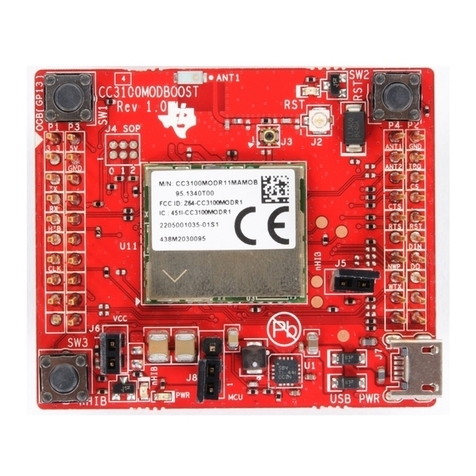
Texas Instruments
Texas Instruments SimpleLink CC3100MOD user guide
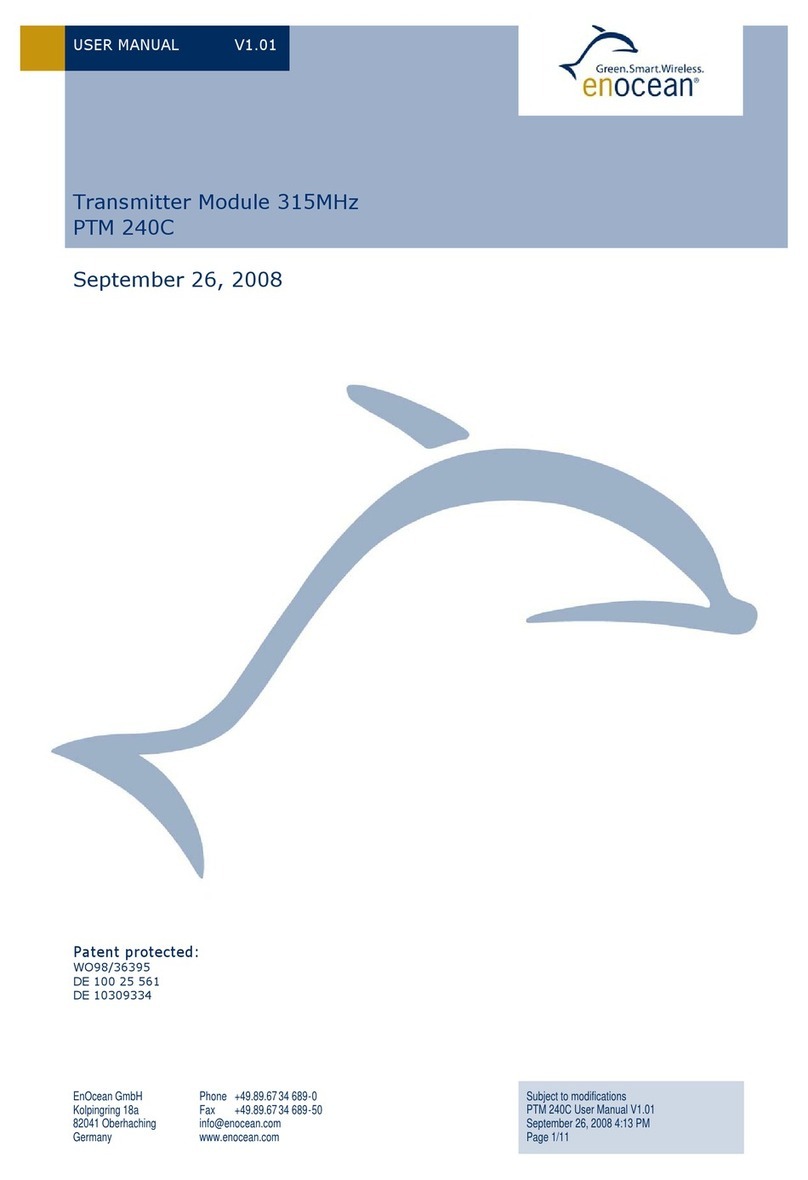
EnOcean
EnOcean PTM 240C user manual

sauermann
sauermann Kimo PST Series quick start guide

Siemens
Siemens simovert masterdrives operating instructions
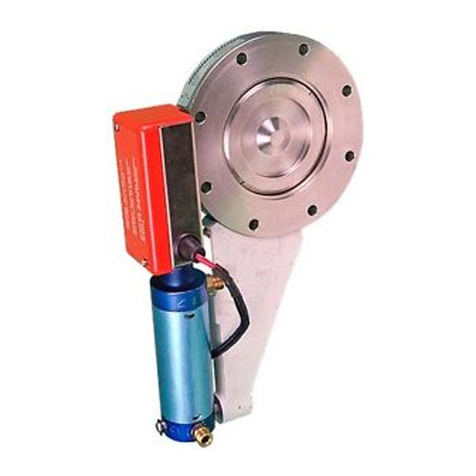
Edwards
Edwards QSB63 instruction manual
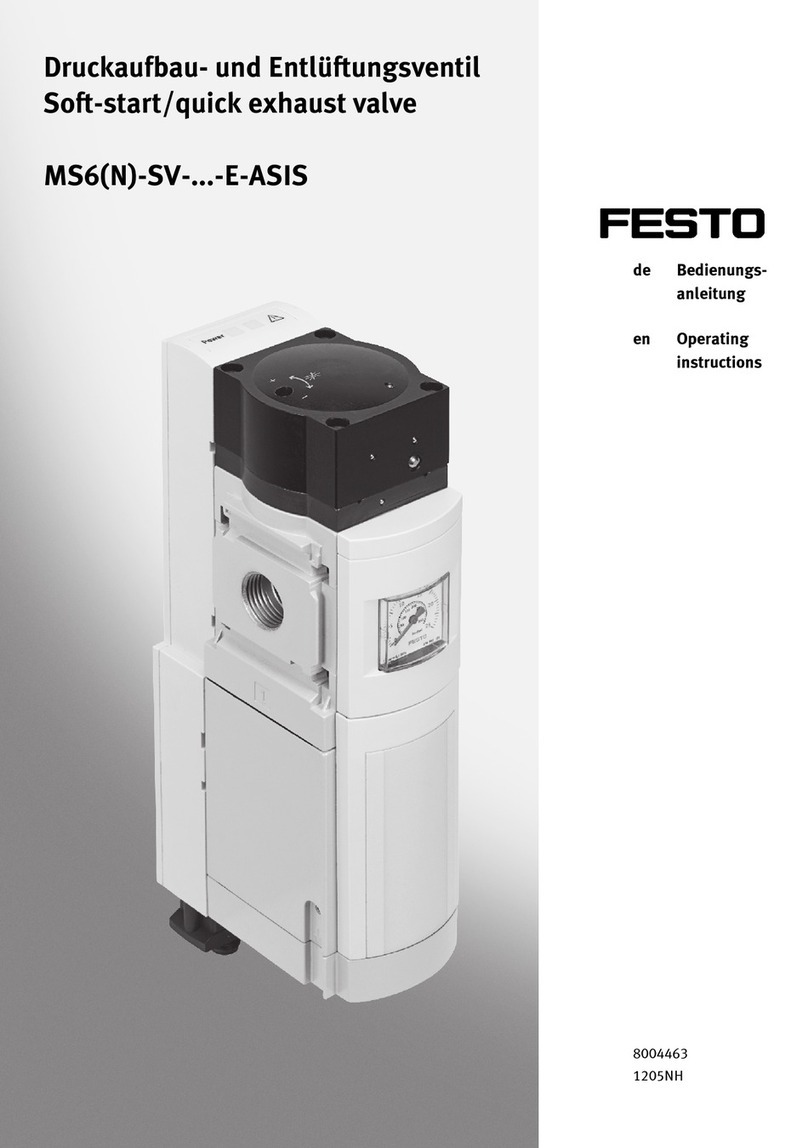
Festo
Festo MS6N-SV-***-E-ASIS Series operating instructions
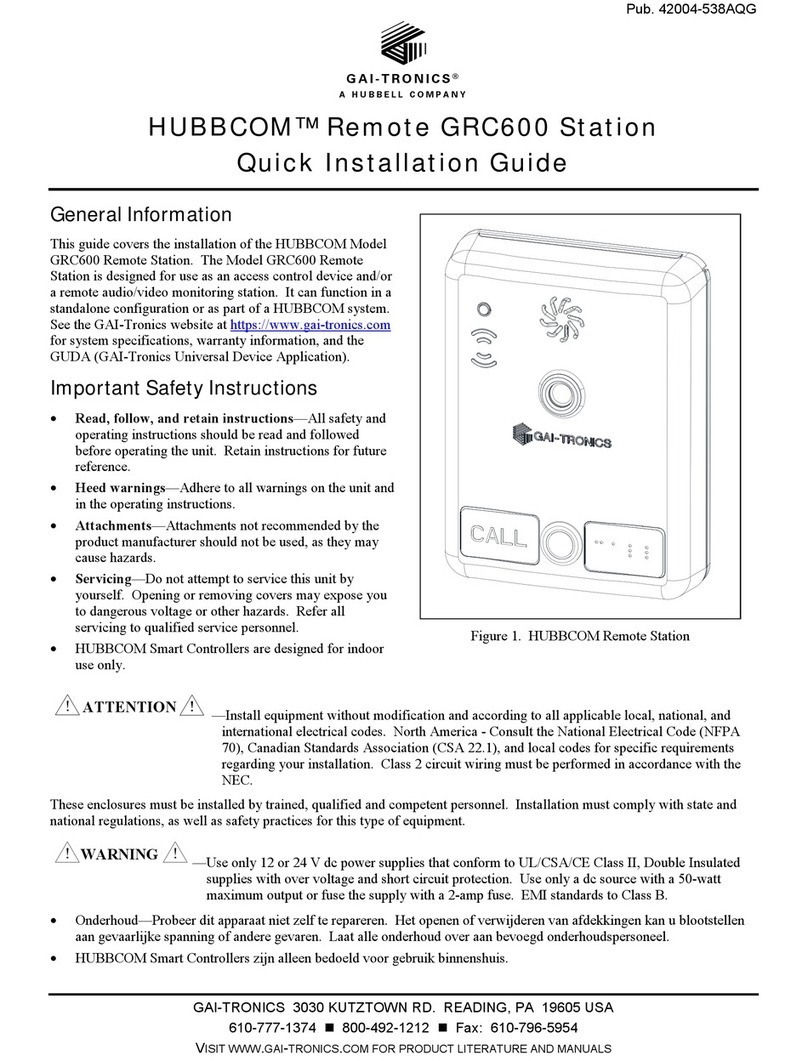
Hubbell
Hubbell GAI-TRONICS HUBBCOM GRC600 Quick installation guide
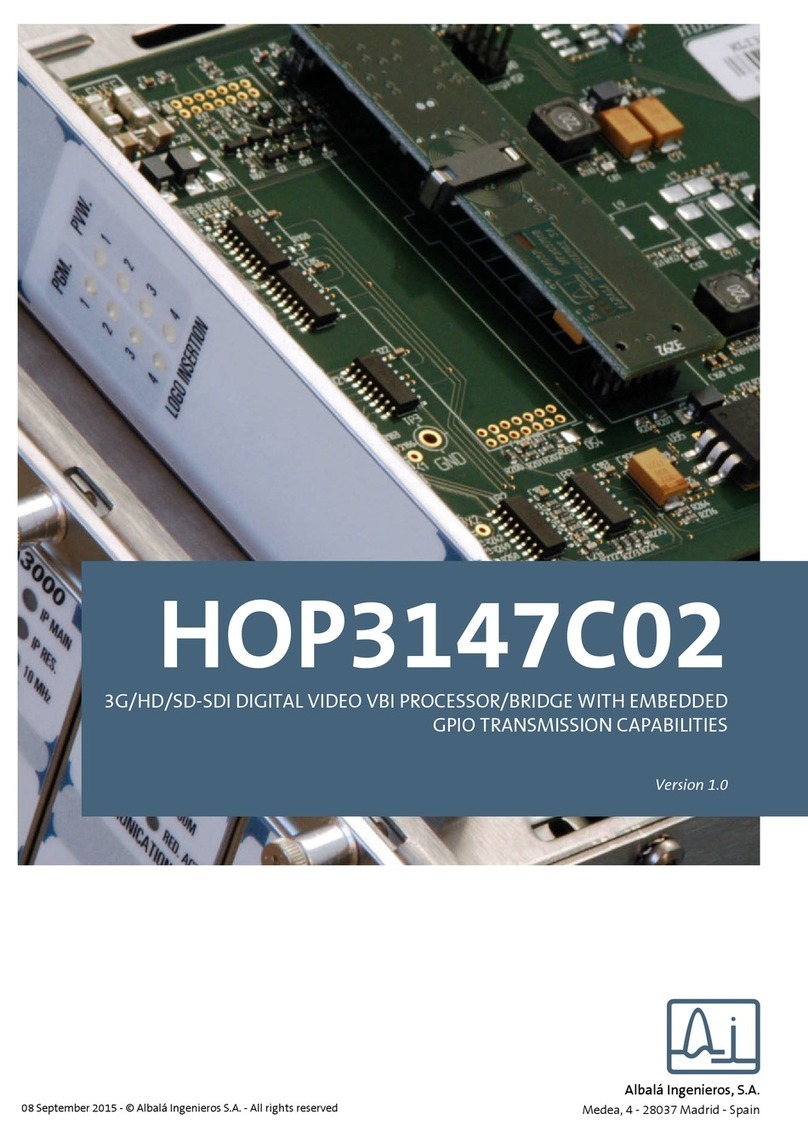
Albalá Ingenieros, S.A.
Albalá Ingenieros, S.A. HOP3147C02 manual
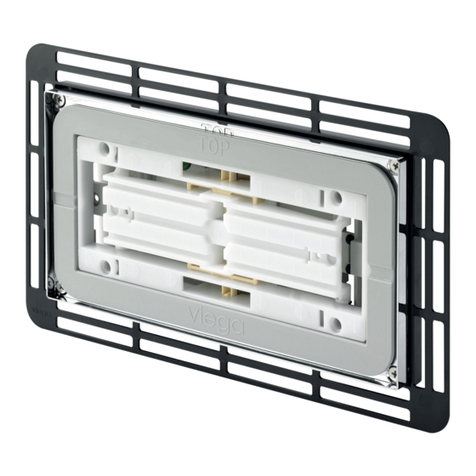
Viega
Viega 8332.3 Instructions for use
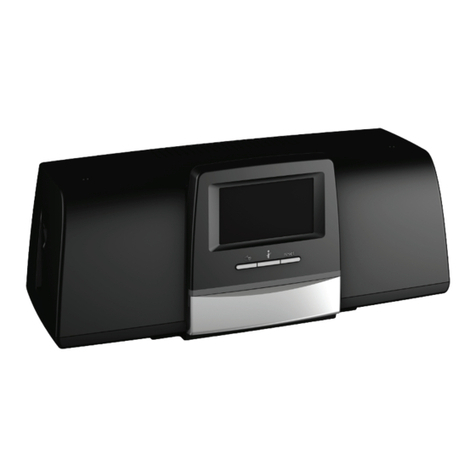
Bosch
Bosch Control 8310 Installation and operating instructions
